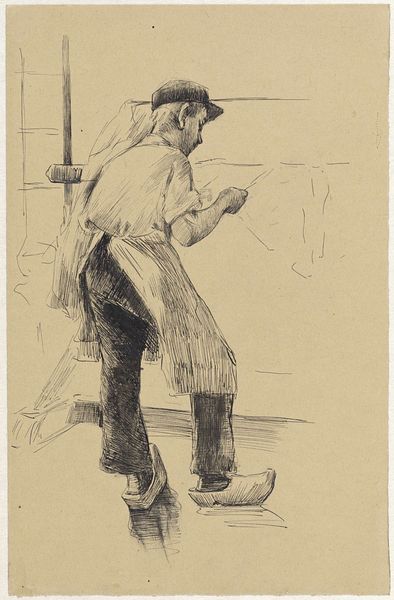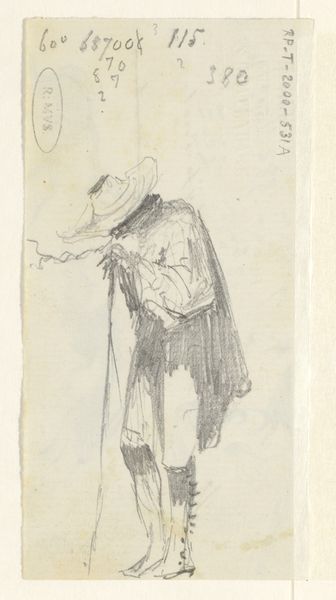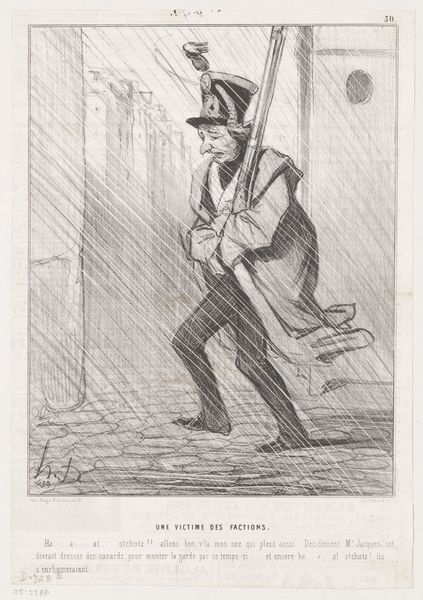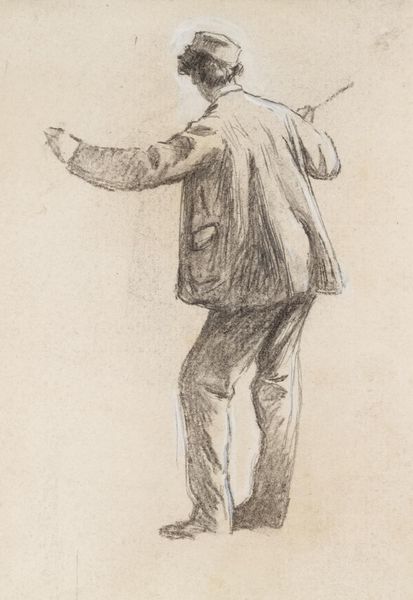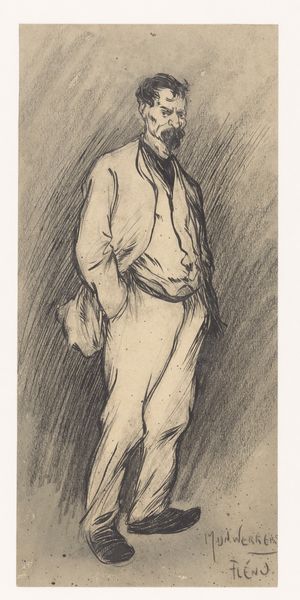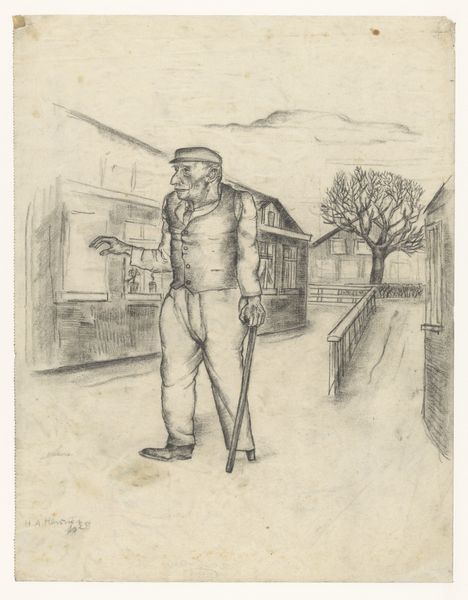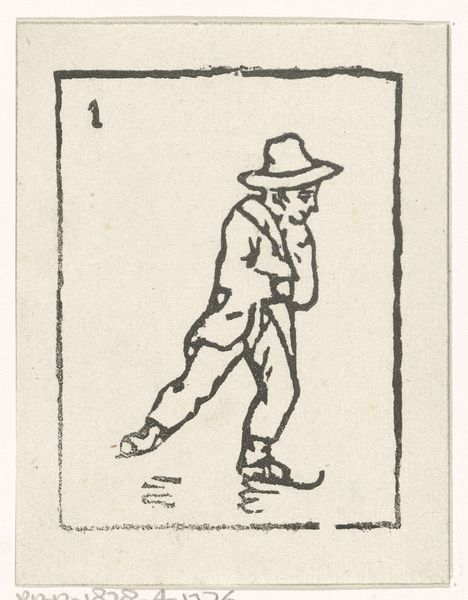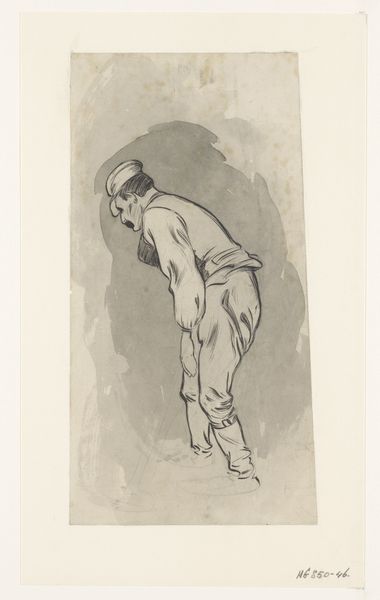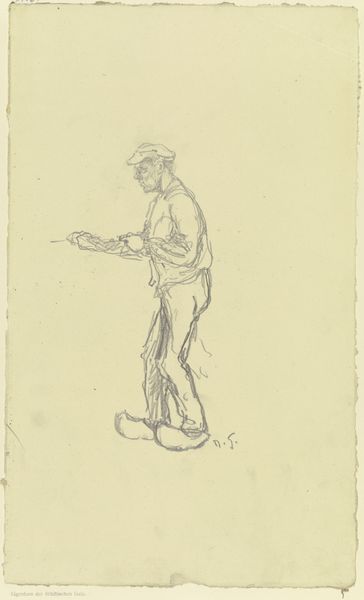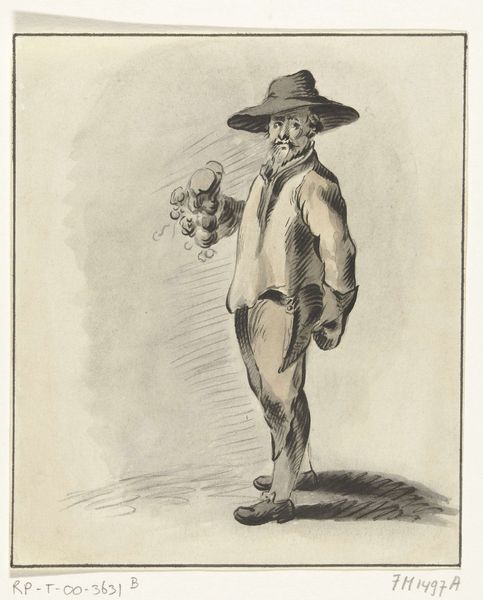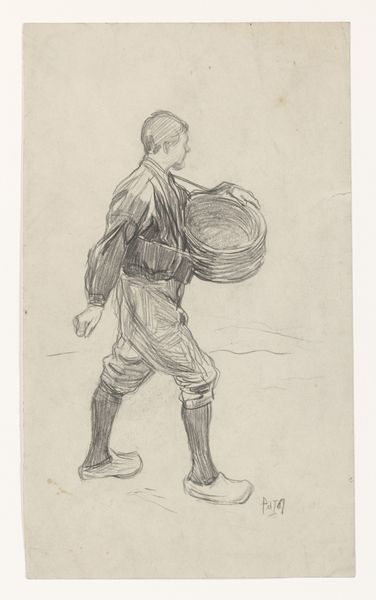![Die zaait, [zal oogsten] by Jan de Waardt](/_next/image?url=https%3A%2F%2Fd2w8kbdekdi1gv.cloudfront.net%2FeyJidWNrZXQiOiAiYXJ0ZXJhLWltYWdlcy1idWNrZXQiLCAia2V5IjogImFydHdvcmtzL2QwNDkyOWZmLTA2ODUtNDkxYi1iMjNkLTFiMzlmMzY3M2Y1YS9kMDQ5MjlmZi0wNjg1LTQ5MWItYjIzZC0xYjM5ZjM2NzNmNWFfZnVsbC5qcGciLCAiZWRpdHMiOiB7InJlc2l6ZSI6IHsid2lkdGgiOiAxOTIwLCAiaGVpZ2h0IjogMTkyMCwgImZpdCI6ICJpbnNpZGUifX19&w=3840&q=75)
drawing, pencil
#
drawing
#
imaginative character sketch
#
light pencil work
#
pencil sketch
#
landscape
#
cartoon sketch
#
personal sketchbook
#
ink drawing experimentation
#
pen-ink sketch
#
pencil
#
sketchbook drawing
#
genre-painting
#
storyboard and sketchbook work
#
sketchbook art
#
realism
Dimensions: height 407 mm, width 234 mm
Copyright: Rijks Museum: Open Domain
Editor: So, this is "Die zaait, [zal oogsten]" by Jan de Waardt, probably made somewhere between 1875 and 1900. It's a drawing with pencil and ink. It has this really rustic, almost desperate feel to it, you know? The sower seems burdened, not joyful. What do you make of it? Curator: That's a perceptive initial reaction. Given the socio-political context of late 19th-century agrarian societies, depictions of rural labor weren't always celebratory. Often, these images served as social commentary, reflecting the hardships and inequities faced by agricultural workers. Notice how the composition directs our gaze downwards, the figure almost bent under some weight. Editor: You mean, the political undertones shape how the act of sowing itself is presented? Curator: Exactly. Consider the function of Realism as an artistic movement, especially its focus on the everyday lives of ordinary people. De Waardt seems to echo this trend. It presents not a romanticized vision of farm life but potentially hints at the burdens and precarity within this existence, which invites questions regarding land ownership and fair labor practices within the Netherlands at the time. How does the presence of the windmill, typically a symbol of progress, play into that? Editor: Hmm, interesting! Maybe it highlights the divide, like some benefit from technology, but others are still toiling the same old way? I didn’t really catch that initially. Curator: The positioning can invite such commentary. Think about how often similar imagery from that time gets displayed; its inclusion and contextualization within museum spaces shapes contemporary interpretation too, influencing viewers toward thinking about labor not just as an aesthetic object but also from a justice angle. Editor: I'm looking at this so differently now. It's amazing how historical context can transform a seemingly simple sketch into something so complex! Curator: Indeed. Examining these pieces isn't just about their aesthetic appeal. Instead, it's about how visual culture reflects and shapes our understanding of the past. Editor: Thanks. I’m walking away from this thinking about the unseen, who makes the images, who interprets them and who decides where we look at them, great food for thought.
Comments
No comments
Be the first to comment and join the conversation on the ultimate creative platform.
